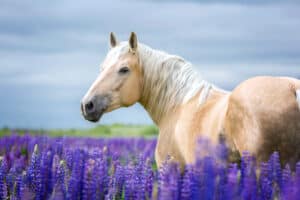Castration is a common feature in the world of domesticated animals. Most people are familiar with the process of castrating a family pet; however, it is also useful when raising livestock such as horses. Humans castrate horses – or don’t – in order to produce or maintain a certain effect. Discover the difference between a gelding and a stallion as well as why castration happens.
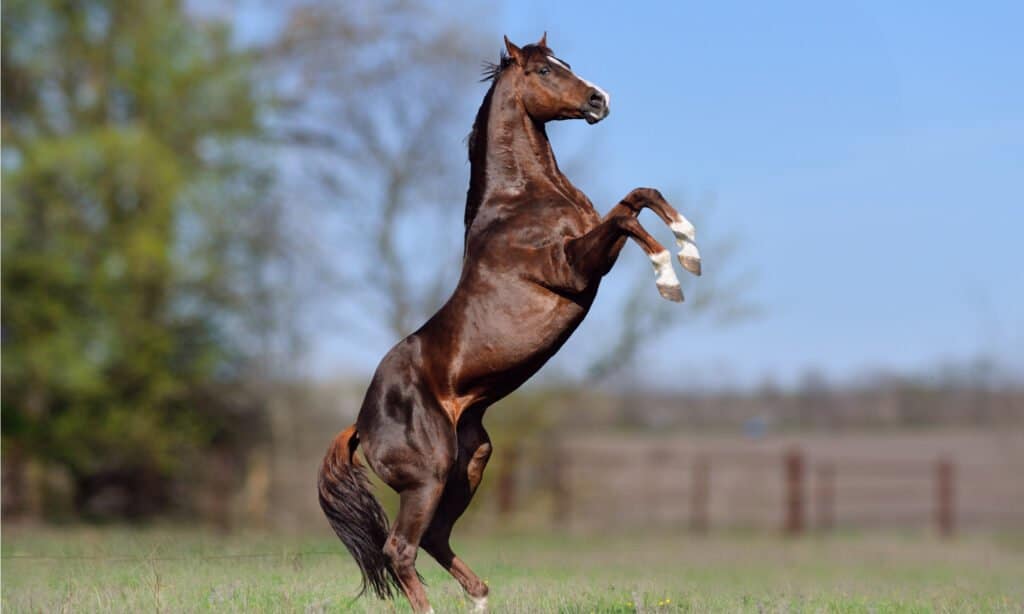
A stallion is a male horse with testicles while a gelding has undergone castration.
©Anaite/Shutterstock.com
What Is Castration?
Castration or gelding is the removal of a male animal’s testicles. This is a permanent alteration that makes a significant difference in the temperament and physique of male horses.
The most effective castrations occur early in a horse’s life. Although a castration in later years will prevent a horse from breeding, that horse may still retain its stallion-like characteristics. A horse with one or both testicles undescended is called a ridgeling, rig, or cryptorchid. As long as one testicle is functional or descended, a male horse can still typically breed.
Gelding vs Stallion: What’s the Difference?
A stallion is a mature, uncastrated male horse while a gelding is a mature, castrated male horse. Below are more comprehensive descriptions of these two types of horses.
Stallion Characteristics
A stallion is an uncastrated male horse that is at least four years old. It may or may not have undescended testicles, though this typically does not impact its ability to breed. Stallions tend to be aggressive and domineering in nature, which can make them difficult to manage. They are also physically powerful. For this reason, they are primarily owned by horse breeders for the purpose of inseminating mares. They do not make good horses for beginning riders or owners.
Common stallion characteristics include:
- Aggression
- Headstrong temperament
- Self-absorption
- Greater power, height, and overall size
- More pronounced muscles
- Mare herding behavior
- Ability to breed
Stallions are also known as entire horses, uncut horses, or studs. A stallion that has produced offspring is called a sire.
Gelding Characteristics
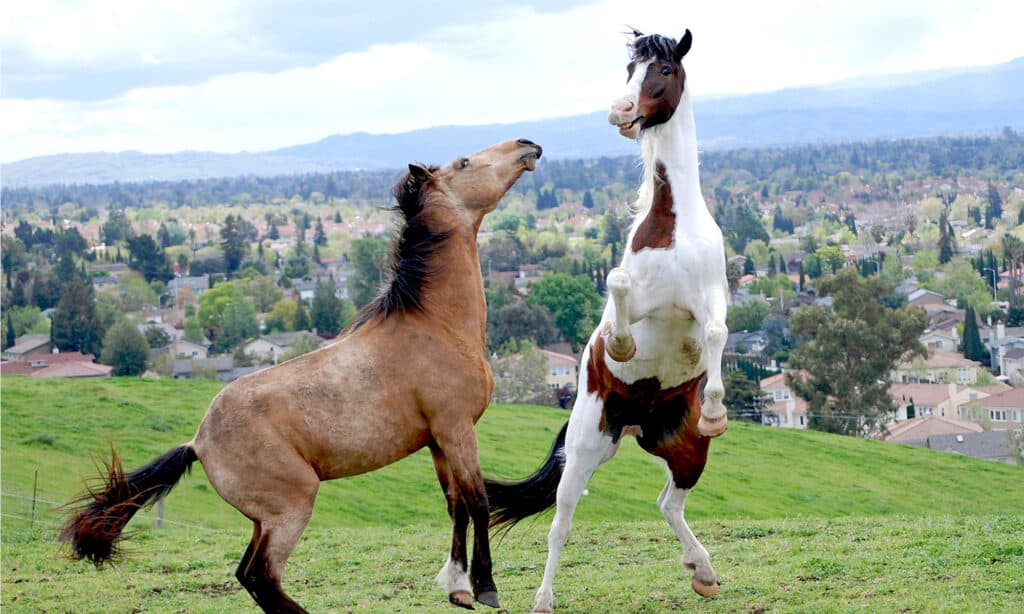
Male horses typically undergo castration in order to make them less aggressive.
©Horse Crazy/Shutterstock.com
A gelding is a castrated horse that is at least four years old. “Gelding” is pronounced with a hard G as in “get.” Geldings cannot breed. Some individuals may have one undescended testicle that remains in their abdominal cavity, making it difficult to remove. Due to the increased heat from the abdomen, the testicle will be incapable of producing viable sperm. However, a gelding with an undescended testicle may retain certain stallion-like characteristics despite not being able to breed.
Common gelding characteristics include:
- Less aggressive, more biddable temperaments
- Smaller overall size
- Less pronounced muscles
- Inability to breed
Other Equine Terminology
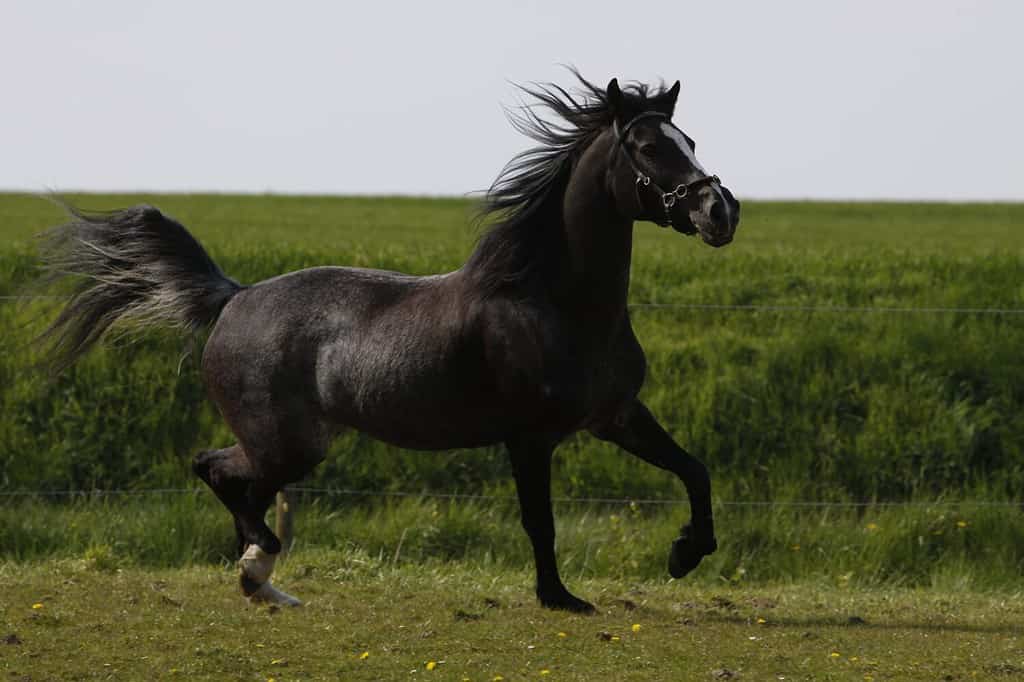
A mare is a mature female horse over four years of age.
©Sabine Hagedorn/Shutterstock.com
- Mare: A mature female horse at least four years of age
- Broodmare: A mare used for breeding
- Dam: A mare that has produced young
- Colt: A weaned male horse under the age of four
- Filly: A weaned female horse under the age of four
- Foal: An unweaned horse of either sex, typically up to six months of age (but sometimes used to refer to any horse less than one year old)
- Yearling: A horse of either sex between one and two years of age
- Weanling: A weaned horse of either sex between six and 12 months of age
Gelding vs Stallion: Why Are Male Horses Gelded?
Most male horses undergo castration to temper their more aggressive qualities, especially in colts or stallions unsuitable for breeding. This makes them more cooperative working, show, racing, or companion horses. It also prevents male horses with less desirable genes from passing them on to future offspring. Obviously, gelding is unsuitable for male horses one intends to breed.
The majority of gelded horses undergo castration at an early age. Experts now recommend gelding colts before they become yearlings or reach sexual maturity. The best age to geld a colt is between six and 12 months, though some experts extend this period to 24 months of age. By this point, the testicles should be sufficiently descended.
Male horses may undergo castration later in life if they become unsuitable for breeding at some point. Castration may also help an elderly stallion to get along better with other horses and thus have a more fulfilling social life in its declining years.
The Gelding Process
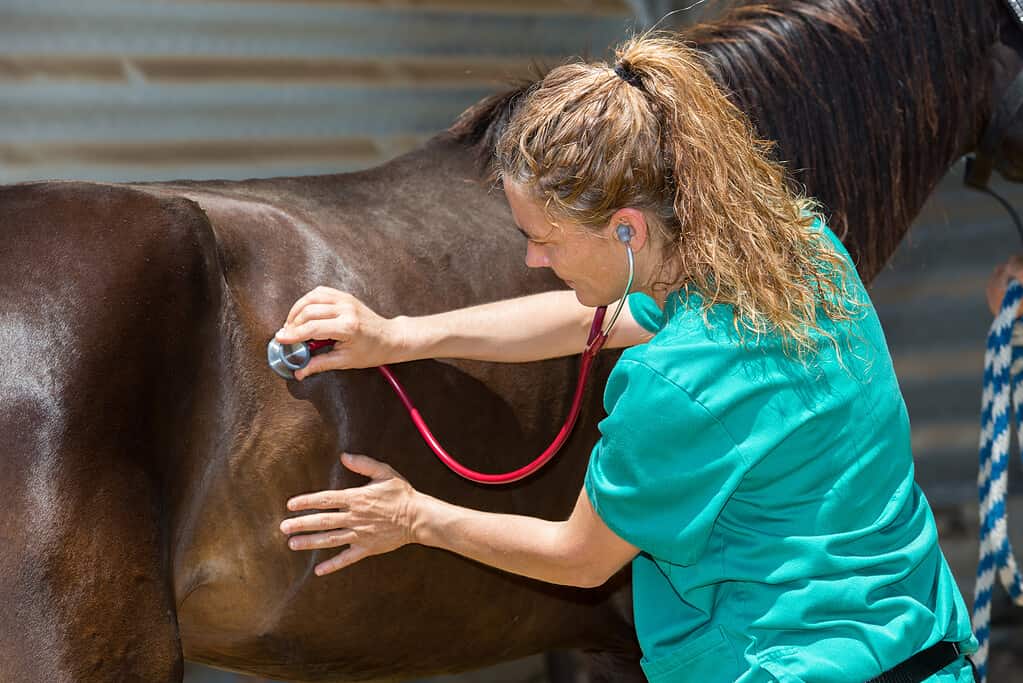
Veterinarians perform either standing or recumbent castrations on male horses.
©iStock.com/fotoedu
Male horses undergo either standing or recumbent castration. Modern equine castrations use anesthesia and antibiotics to control pain and potential infection. In both types of procedures, the veterinarian typically removes the smaller or higher testicle first. This prevents the cremaster muscle from drawing it up into the body. Whether standing or recumbent, a horse may undergo an open, closed, or semi-closed castration.
Standing Castration
With this type of castration, the horse receives local anesthesia and remains upright during the procedure. This is recommended for simpler procedures. A veterinarian typically performs the standing castration in a field on a sedated, sometimes physically restrained horse.
First, the veterinarian injects local anesthesia into both testes. Then he or she makes an incision through the scrotum to remove the testes from inside. After successful removal, the veterinarian uses ligatures or emasculators to both crush and cut the spermatic cord. This not only severs the cord but prevents hemorrhage. The veterinarian then repeats the operation on the other side.
Recumbent Castration
With this type of castration, the horse receives general anesthesia. This means it loses consciousness and undergoes the procedure while lying down. Recumbent castration generally means less risk to the horse and the surgeon. It is also more suitable for horses with undescended testicles who require a more complicated procedure. The surgical procedure for recumbent castration is much the same as for standing castration.
The Risks of Castration
Like any other surgical procedure, castration poses a number of potential risks for the horse in question. Some of these risks include:
- Post-operative infection
- Post-operative swelling and seroma formation
- Trauma to the penis or surrounding tissues
- Hemorrhage
- Eventration
- Peritonitis
- Hydrocele formation
Despite the potential risks, castration is a common, standard, typically painless procedure. The vast majority of horses successfully recover without any problem.
Can a Gelded Horse Still Breed?
A gelded horse is incapable of breeding. Castration is a permanent physical alteration that cannot be reversed. A gelded horse may still exhibit some stallion-like behavior, particularly if it has an undescended testicle, but this does not mean it is capable of producing offspring. In the vast majority of cases, gelding causes distinct changes in the male horse’s personality.
Can a Female Horse Be a Stallion?
By definition, a female horse cannot be a stallion. The term “stallion” refers exclusively to a mature male horse with testicles. The proper, equivalent term for a mature female horse is “mare.”
Gelding vs Stallion: Which Is Better to Ride?
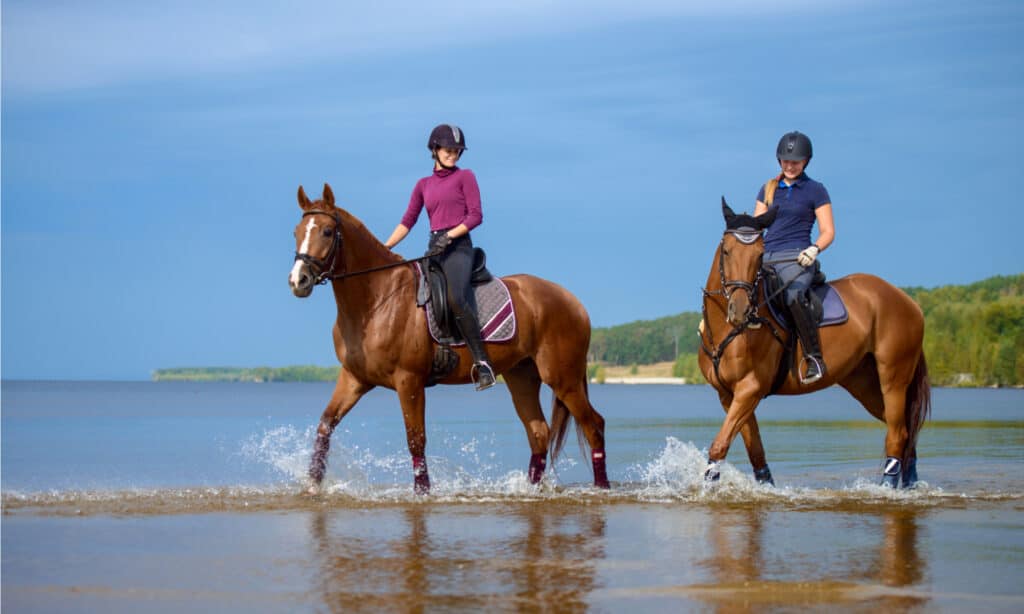
Geldings and mares make better riding horses for beginners than stallions.
©Cool_photo/Shutterstock.com
Geldings make calmer and more cooperative riding horses than do stallions. This is because of their lower levels of testosterone. Physically, they are also less muscular and powerful, making them easier to control. Far from being an appropriate choice for beginners, stallions are frequently too aggressive even for experienced riders. While it may sound exciting to own a fiery stallion, the general consensus is that it’s more trouble than it’s worth.
Gelding vs Mare: Which Is Better to Ride?
There is some debate about which makes a better riding horse, a gelding or a mare. Generally, mares are calm, gentle horses suitable for beginners. Their smaller size also makes them more manageable. However, they can be moody and temperamental while in heat. Mares cycle about every 21 days, during which they may experience mood swings and display increased interest in nearby stallions. This is especially noticeable in spring. It is important to note that not every mare will display the same degree of moodiness.
Geldings, on the other hand, do not enter heat or suffer from the same kind of mood swings. As long as they were castrated early before they had a chance to develop stallion-like characteristics, they generally make excellent riding horses for beginners.
Ultimately, it is up to the individual rider to assess the personality and suitability of each individual mare or gelding. As a general rule, beginning riders should avoid especially temperamental mares or geldings that underwent castration later in life.
Conclusion
Male horses typically undergo castration to lessen their aggression or prevent them from breeding. The decision to geld a horse depends on the owner’s goals, the horse’s personality, and whether or not breeding is desirable.
The photo featured at the top of this post is © mariait/Shutterstock.com
Thank you for reading! Have some feedback for us? Contact the AZ Animals editorial team.




